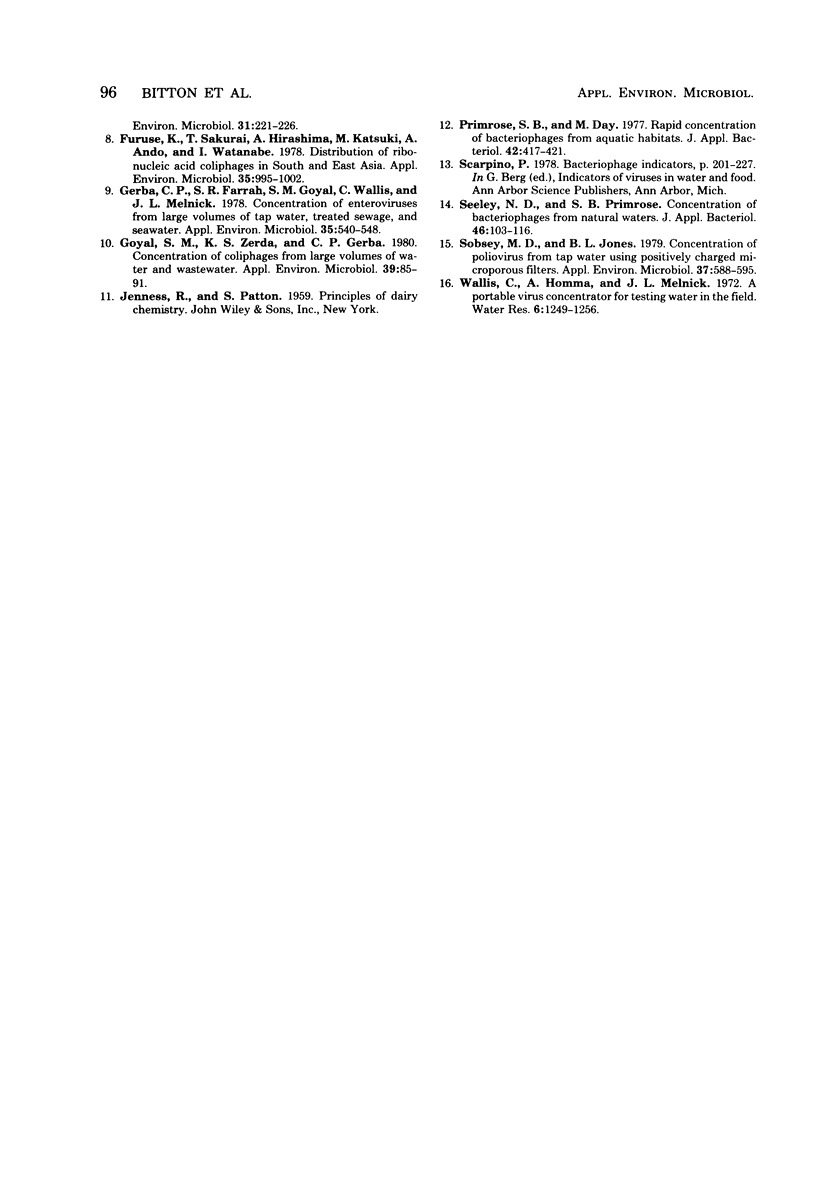Abstract
A magnetite-organic flocculation method was developed for the concentration of coliphages from wastewater effluents and polluted lake water. A high percent (68 to 100%) recovery of coliphages from sewage effluents was achieved by this procedure. Coliphage recovery from Lake Alice, a sewage-contaminated lake, showed phage concentrations ranging from 2.3 X 10(2) to 1.9 X 10(3) plaque-forming units per liter. This method is simple and inexpensive and may be carried out under field conditions.
Full text
PDF



Selected References
These references are in PubMed. This may not be the complete list of references from this article.
- Dhillon T. S., Chan Y. S., Sun S. M., Chau W. S. Distribution of coliphages in Hong Kong sewage. Appl Microbiol. 1970 Aug;20(2):187–191. doi: 10.1128/am.20.2.187-191.1970. [DOI] [PMC free article] [PubMed] [Google Scholar]
- Dhillon T. S., Dhillon E. K. Studies on bacteriophage distribution. II. Isolation and host rage based classification of phages active on three species of Enterobacteriaceae. Jpn J Microbiol. 1972 Jul;16(4):297–306. doi: 10.1111/j.1348-0421.1972.tb00662.x. [DOI] [PubMed] [Google Scholar]
- Ewert D. L., Paynter M. J. Enumeration of bacteriophages and host bacteria in sewage and the activated-sludge treatment process. Appl Environ Microbiol. 1980 Mar;39(3):576–583. doi: 10.1128/aem.39.3.576-583.1980. [DOI] [PMC free article] [PubMed] [Google Scholar]
- Furuse K., Sakurai T., Hirashima A., Katsuki M., Ando A., Watanabe I. Distribution of ribonucleic acid coliphages in south and east Asia. Appl Environ Microbiol. 1978 Jun;35(6):995–1002. doi: 10.1128/aem.35.6.995-1002.1978. [DOI] [PMC free article] [PubMed] [Google Scholar]
- Gerba C. P., Farrah S. R., Goyal S. M., Wallis C., Melnick J. L. Concentration of enteroviruses from large volumes of tap water, treated sewage, and seawater. Appl Environ Microbiol. 1978 Mar;35(3):540–548. doi: 10.1128/aem.35.3.540-548.1978. [DOI] [PMC free article] [PubMed] [Google Scholar]
- Goyal S. M., Zerda K. S., Gerba C. P. Concentration of coliphages from large volumes of water and wastewater. Appl Environ Microbiol. 1980 Jan;39(1):85–91. doi: 10.1128/aem.39.1.85-91.1980. [DOI] [PMC free article] [PubMed] [Google Scholar]
- Primrose S. B., Day M. Rapid concentration of bacteriophages from aquatic habitats. J Appl Bacteriol. 1977 Jun;42(3):417–421. doi: 10.1111/j.1365-2672.1977.tb00709.x. [DOI] [PubMed] [Google Scholar]
- Sobsey M. D., Jones B. L. Concentration of poliovirus from tap water using positively charged microporous filters. Appl Environ Microbiol. 1979 Mar;37(3):588–595. doi: 10.1128/aem.37.3.588-595.1979. [DOI] [PMC free article] [PubMed] [Google Scholar]


